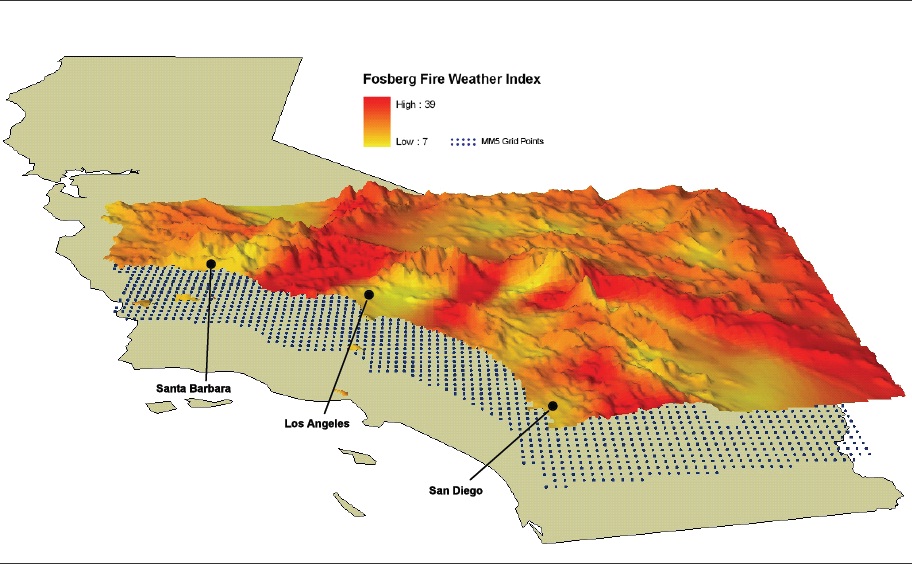
|
||||||||||||||||
|

Interdisciplinary Spatial variation in extreme winds predicts large wildfire locations in chaparral ecosystemsThis project is a
collaboration with the Moritz
fire
ecology group at UC Berkeley. Fire plays a crucial role in many ecosystems, and a better understanding of different controls on fire activity is needed. Here we analyze spatial variation in fire danger during episodic wind events (or Santa Ana events) in coastal southern California, a densely populated Mediterranean©\climate region. We identified Santa Ana events in our recent 6-km resolution Southern California climate simulations, and provided the simulated meteorological information associated with those events to the Berkeley group. They then used this data and a fire behavior model to produce the first high©\resolution map of the fire risk associated with Santa Anas. The map is shown below. The team also analyzed over half a century of mapped fire history in chaparral ecosystems of the region, finding that coupled climate/fire behavior models successfully predict where the largest wildfires are most likely to occur. There is a surprising lack of information about extreme fire weather patterns worldwide, and this type of quantitative analyses of their spatial variation will be important for effective fire management and sustainable long©\term urban development on fire©\prone landscapes.
At UCLA, Mimi Hughes and Alex
Hall make up the team that performed this research.
|
|||||||||||||||

